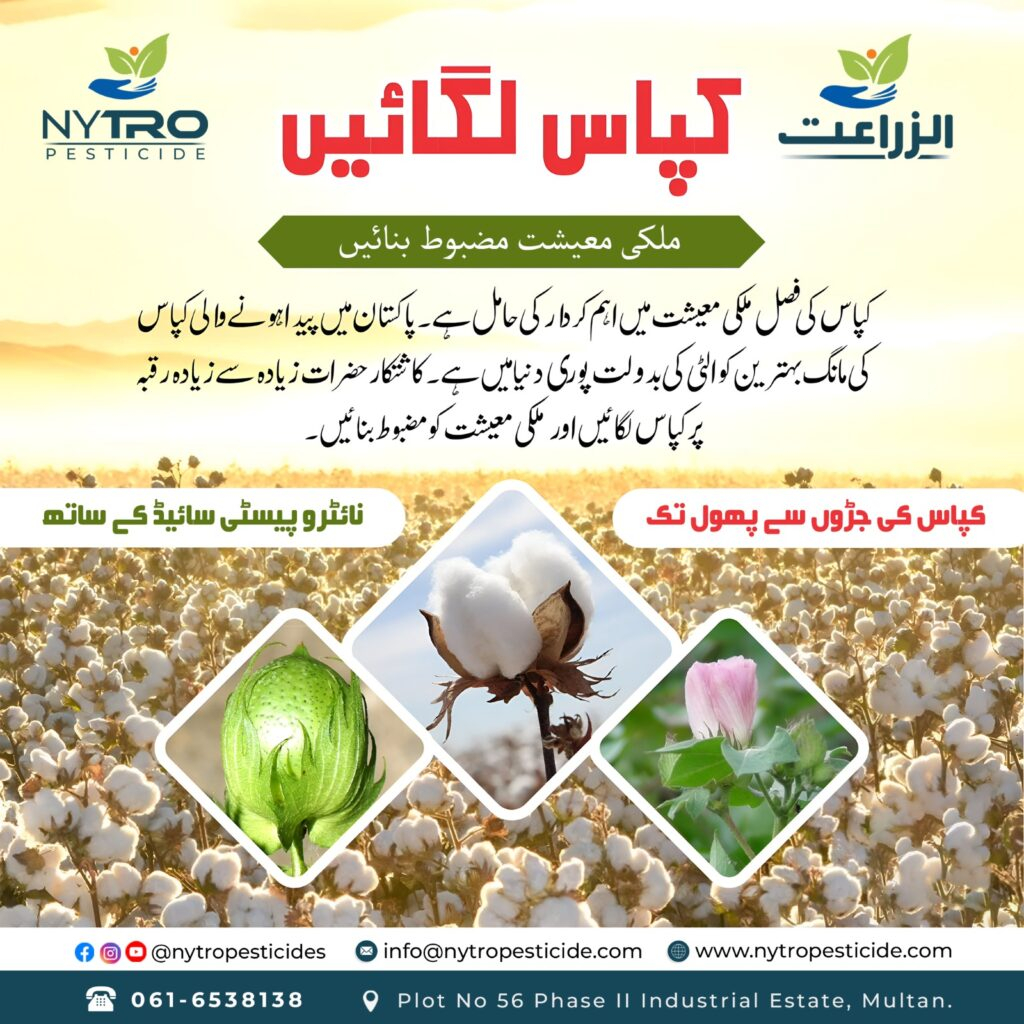Introduction
Cotton is one of the world’s most important cash crops, used in textiles, medical supplies, and industrial products. However, cotton farming faces significant challenges from pests like bollworms, aphids, and whiteflies, which can drastically reduce yields. To combat these threats, farmers rely on pesticides for cotton crops—chemical or biological agents that protect plants from insect damage, fungal infections, and weeds.

This article explores the types of pesticides used in cotton farming, their benefits, potential risks, and sustainable alternatives to minimize environmental impact while maximizing crop productivity.
Why Are Pesticides Important in Cotton Farming?
Cotton crops are highly susceptible to pests and diseases, leading to substantial economic losses if left untreated. Pesticides help:
- Increase yield by preventing pest-related crop damage.
- Improve fiber quality by reducing boll rot and staining.
- Control invasive weeds that compete for nutrients.
- Prevent disease outbreaks caused by fungi and bacteria.
Without proper pest management, cotton farmers could lose up to 50% of their harvest due to insect infestations alone.
Types of Pesticides Used in Cotton Crops
Insecticides (For Pest Control)
Cotton is attacked by various insects, requiring targeted insecticides:
- Neonicotinoids (Imidacloprid, Thiamethoxam) – Effective against aphids and whiteflies.
- Pyrethroids (Cypermethrin, Deltamethrin) – Combat bollworms and armyworms.
- Organophosphates (Chlorpyrifos, Malathion) – Broad-spectrum but highly toxic; being phased out in many countries.
Herbicides (For Weed Control)
Weeds compete with cotton for water and nutrients. Common herbicides include:
- Glyphosate (Roundup) – Widely used but controversial due to environmental concerns.
- Pendimethalin – Pre-emergence herbicide for grassy weeds.
- Diuron – Controls broadleaf weeds in cotton fields.
Fungicides (For Disease Prevention)
Fungal infections like Fusarium wilt and Alternaria leaf spot can devastate cotton. Key fungicides:
- Azoxystrobin – Protects against fungal pathogens.
- Mancozeb – Prevents seedling diseases.
- Carbendazim – Treats soil-borne fungal infections.
Biological Pesticides (Eco-Friendly Alternatives)
To reduce chemical dependency, farmers are adopting bio-pesticides:
- Bt Cotton (Bacillus thuringiensis) – Genetically modified to resist bollworms.
- Neem Oil – Natural insect repellent.
- Beauveria bassiana – Fungus that kills pests like whiteflies.
Benefits of Using Pesticides in Cotton Farming
- Higher Crop Yields – Prevents losses from pests and diseases.
- Better Fiber Quality – Reduces boll damage and discoloration.
- Cost-Effective Protection – Cheaper than losing entire harvests.
- Supports Global Cotton Demand – Ensures steady supply for textiles and industries.
Risks and Environmental Concerns
While pesticides are essential, their overuse leads to:
- Soil & Water Pollution – Chemicals seep into groundwater.
- Pesticide Resistance – Pests evolve, requiring stronger doses.
- Harm to Non-Target Species – Bees, birds, and beneficial insects die from exposure.
- Human Health Risks – Farmers face poisoning from toxic chemicals.
Case Study: The Bt Cotton Controversy
Bt Cotton (genetically modified to resist pests) reduced insecticide use initially. However, in India, secondary pests like pink bollworms developed resistance, forcing farmers to use more pesticides.
Future of Pesticides in Cotton Farming
- RNA Interference (RNAi) Pesticides – Genetically disrupt pest reproduction.
- Nanotechnology – Slow-release pesticides reduce runoff.
- AI-Driven Pest Forecasting – Predicts outbreaks for timely intervention.
Conclusion
Pesticides play a vital role in cotton farming, protecting crops from devastating pests and diseases. However, over-reliance on chemicals harms ecosystems and human health. By adopting Integrated Pest Management (IPM), bio-pesticides, and precision farming, cotton growers can achieve sustainable, high-yield production with minimal environmental impact.
FAQs on Pesticides for Cotton Crops
What is the most common pesticide used in cotton farming?
Neonicotinoids and pyrethroids are widely used, but Bt Cotton reduces chemical dependency.
Are organic pesticides effective for cotton?
Yes, neem oil and Bt toxins work well but may require more frequent application.
How can farmers reduce pesticide use?
Through IPM, crop rotation, and using pest-resistant GM cotton.
What are the dangers of pesticide overuse?
Soil degradation, water contamination, and pesticide-resistant superbugs.
Is Bt Cotton safe for the environment?
Yes, but secondary pests can emerge, requiring careful management.


